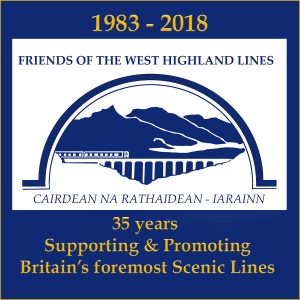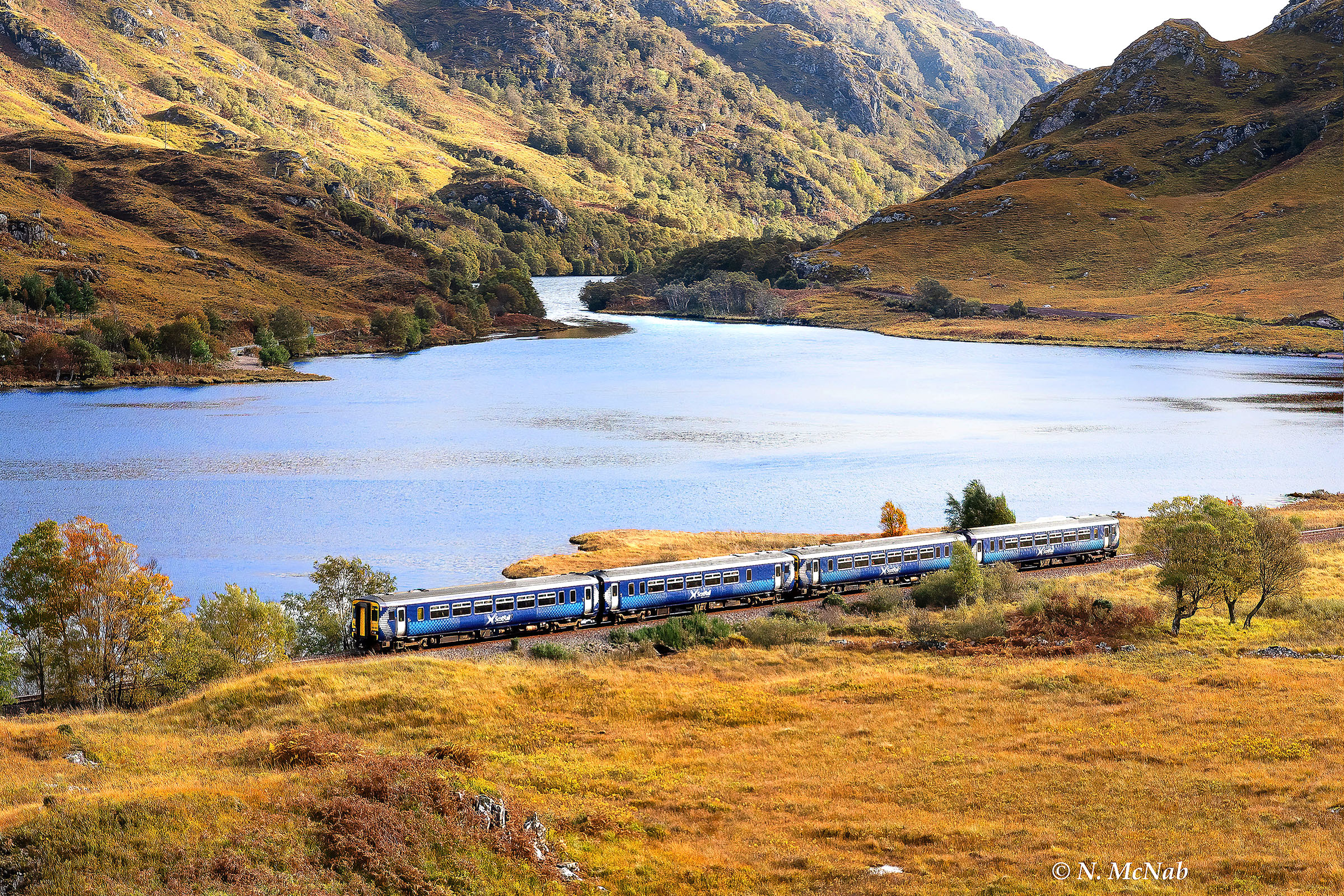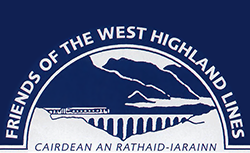The West Highland Lines, the Top Rail Journey in the World. Britain’s railways of superlatives which take you to the:
-
Highest mountain (Ben Nevis)
-
Largest loch (Loch Lomond)
-
Longest loch (Loch Awe)
-
Deepest loch (Loch Morar)
-
Highest mainline station (Corrour)
-
Most westerly station (Arisaig)
-
Gateway to the Hebrides (Oban & Mallaig)
-
Britain’s Outdoor Capital (Fort William)
 The West Highland Lines are world-class railways making a major contribution to accessibility for residents, tourists and freight in this uniquely beautiful part of Scotland. ScotRail trains link the West Highlands with Glasgow and there is also an overnight Caledonian Sleeper linking Fort William and intermediate West Highland stations with London.
The West Highland Lines are world-class railways making a major contribution to accessibility for residents, tourists and freight in this uniquely beautiful part of Scotland. ScotRail trains link the West Highlands with Glasgow and there is also an overnight Caledonian Sleeper linking Fort William and intermediate West Highland stations with London.
ScotRail West Highland TIMETABLE
This website gives an introduction to the line, with pictures of the spectacular scenery brought to you by Norman McNab and others as attributed.
All pictures are copyright of the authors and must not be copied without permission. Click here for more photographic information and permissions.
To join the Friends of the West Highland Lines CLICK HERE
Keep up to date with latest News by visiting our News Page, X Feed or Facebook Page.

This is the 10:10 Mallaig to Fort William/Glasgow Queen Street service passing the head of Loch Eilt west of Glenfinnan. Travelling on this ScotRail service may not have the romance of the Jacobite Steam Train and ‘Harry Potter’, but you travel the same route and have the additional bonus of viewing all the same wonderful scenery for a great price.
This site includes Information on the History, Politics and Engineering features of the West Highland Lines, authored by railway historian, Dr John McGregor and railway author, Gordon Webster. This website was originally built by Norman McNab with help from John McCormick and Jimmy Powdrell Campbell.


